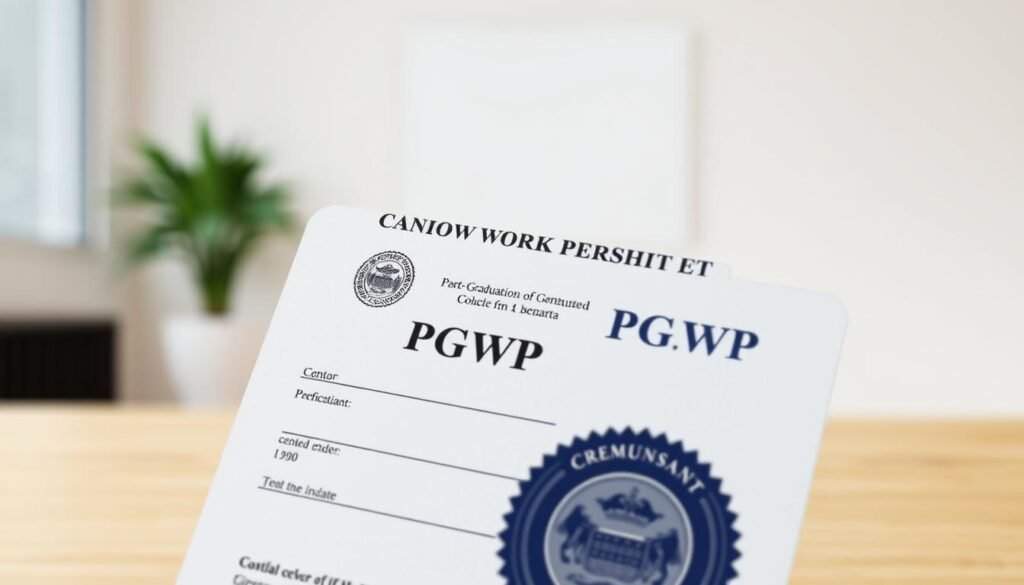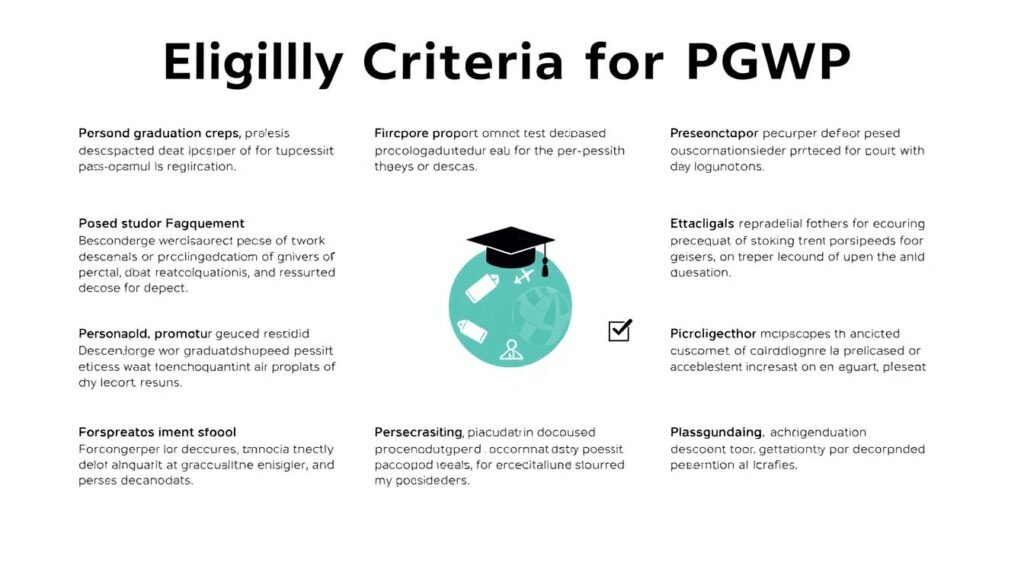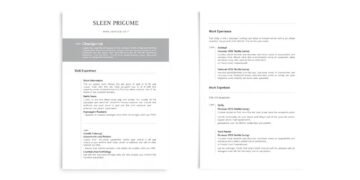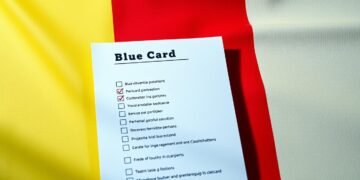Graduating from a Canadian institution is a significant milestone, but what comes next? For many international students, the post-graduation work permit is the key to unlocking valuable Canadian work experience. However, navigating the application process can be overwhelming. Are you prepared to meet the requirements and deadlines?
This permit allows graduates to work in Canada for up to three years, depending on the length of their study program. It’s a critical step for those aiming to gain professional experience and potentially transition to permanent residency. But with strict guidelines and a 180-day application window, preparation is essential.
Understanding the process and having a clear plan can make all the difference. Let’s explore how you can simplify this journey and ensure your application stands out.
Key Takeaways
- The post-graduation work permit is a vital opportunity for international students to gain Canadian work experience.
- Thorough preparation is crucial to avoid application rejections.
- Applicants must submit their application within 180 days of graduation.
- Approval rates and processing times vary, so timely submission is key.
- Having a clear checklist can simplify the complex application process.
What is a PGWP?
Starting your career in Canada begins with understanding the post-graduation work permit. This open work permit is designed for graduates of designated learning institutions (DLIs) in Canada. It allows you to gain valuable work experience and explore professional opportunities in the country.
Understanding the Permit
The duration of the permit depends on the length of your study program. Programs lasting eight months to three years qualify for a permit of the same length. One of the key advantages is that you don’t need a job offer to apply. This flexibility makes the pgwp application process straightforward for eligible graduates.
Benefits of the Permit
Holding a post-graduation work permit opens doors to full-time work with multiple employers. It also serves as a stepping stone toward citizenship canada. By gaining Canadian work experience, you can enhance your eligibility for permanent residency. This permit is more than just a work authorization—it’s a pathway to building a future in Canada.
Eligibility Criteria for PGWP
Understanding the eligibility criteria is the first step toward securing your post-graduation work permit. These requirements ensure that only qualified graduates can access this valuable opportunity. Let’s break down the key factors you need to meet.
Designated Learning Institution (DLI) Requirements
To qualify, you must have graduated from a Designated Learning Institution (DLI) with programs approved for the post-graduation work permit. Not all institutions or programs are eligible, so verify your school’s status before applying. This ensures your education aligns with Canadian immigration standards.
Full-Time Study Requirements
You must have maintained full-time enrollment throughout your program, except during your final semester. Part-time study or breaks without valid reasons can disqualify you. However, exceptions exist for students affected by COVID-19, allowing up to 50% of courses to be completed online until August 31, 2024.
Program Duration and Completion
The length of your permit depends on your program’s duration. Programs lasting eight months to three years qualify for a permit of the same length. Ensure you have proof of program completion, such as an official transcript or diploma. Special rules apply for graduate thesis submissions and part-time terms, so review these carefully.
PGWP Checklist: Essential Documents
Preparing your application for the post-graduation work permit starts with gathering the right documents. These required documents are crucial to proving your eligibility and ensuring a smooth process. Missing even one item can delay or jeopardize your application.
Proof of Program Completion
One of the most important documents is proof of program completion. This can be your official degree, diploma, or transcript. Ensure the document includes course codes, final grades, and the date of completion. Some institutions also provide a formal letter confirming your graduation, which is equally acceptable.
Proof of Full-Time Enrollment
You must also provide evidence of full-time enrollment throughout your program. This typically includes transcripts or letters from your institution. Exceptions exist for students who studied part-time in their final semester or were affected by COVID-19. Double-check these details to avoid complications.
Passport Copy
A clear copy of your passport is another essential item. Ensure your passport expiry date exceeds the processing time for your application by at least 180 days. If your passport is renewed during the process, submit both the old and new copies to avoid delays.
Preparing these documents in advance can save you time and stress. Make sure all files are scanned clearly and meet the digital upload guidelines set by IRCC. Attention to detail is key to a successful application.
Language Proficiency Requirements
Meeting language proficiency standards is a critical step for international graduates aiming to work in Canada. Demonstrating your ability to communicate effectively in english french is essential for integrating into the canadian language environment. This requirement ensures you can thrive in professional settings and meet immigration standards.
Accepted Language Tests
Several approved tests are available to prove your language skills. For English, you can take the CELPIP, IELTS, or PTE Core. For French, the TEF and TCF are accepted. These tests assess your reading, writing, listening, and speaking abilities. Ensure your scores are valid, as they must be within two years of your application date.
Minimum Language Scores
Starting November 1, 2024, applicants must achieve a minimum score of CLB/NCLC 7. This standard applies to both English and French tests. If you’ve graduated from a program taught in English or French, you may be exempt from this requirement. Always verify your language test results to ensure they meet the criteria.
Preparing for these tests is crucial. Many resources and authorized testing centers are available to help you succeed. By meeting these language requirements, you’ll be one step closer to launching your career in Canada.
Digital Photo Specifications
Your application for a post-graduation work permit requires attention to detail, especially when it comes to your digital photo. IRCC has strict guidelines to ensure your photo meets their standards. A compliant photo is essential to avoid delays or rejections.
IRCC Photo Requirements
Your photo must meet specific technical requirements. It should be 35x45mm in size with a neutral expression. Avoid glare, shadows, or incorrect proportions, as these are common reasons for rejection. IRCC provides templates to help you get it right.
Photos must be less than six months old. Whether you’re submitting a digital or physical photo, ensure it aligns with IRCC’s guidelines. Professional photography studios are recommended to meet these standards.
Tips for a Compliant Photo
Start by reviewing the instruction letter from IRCC for detailed photo specifications. Wear neutral clothing and ensure your face is fully visible. Avoid accessories like hats or glasses unless medically necessary.
Double-check the lighting and background to eliminate shadows or reflections. If submitting digitally, ensure the file format and resolution meet IRCC’s requirements. Taking these steps will help you submit a photo that meets all criteria.
Proof of Financial Support
Proving your financial readiness is essential for a successful application. The Canadian government requires applicants to demonstrate they can support themselves during their stay. This ensures you won’t face financial hardships while working in Canada.
Required Financial Documents
To meet the proof requirements, you’ll need to submit specific required documents. These include bank statements showing liquid funds for at least three months. Guaranteed investment certificates (GICs) are also acceptable. Ensure these documents are clear and up-to-date.
If you’re receiving third-party support, include a sponsorship letter. This letter must detail the sponsor’s commitment to your financial needs. For foreign accounts, provide currency conversion details to show the equivalent amount in Canadian dollars.
Minimum Funds Requirement
Single applicants must meet the current minimum fund requirements set by IRCC. These funds should cover living expenses, such as housing, food, and transportation. Double-check the latest guidelines to ensure your financial proof meets the criteria.
Avoid common pitfalls like submitting outdated statements or unclear documents. Attention to detail is key to a smooth application process. By preparing your financial documents carefully, you’ll increase your chances of approval.
Biometrics Fee and Process
Navigating the biometrics process is a crucial step in your application journey. This step ensures your identity is verified, which is mandatory for most applicants. Understanding the fee and collection process can help you avoid delays and ensure a smooth experience.
How to Pay the Biometrics Fee
The fee for biometrics is $85 CAD, payable through the IRCC secure portal. Follow the step-by-step instructions provided in your instruction letter to complete the payment. Online payment is the most convenient option, but ensure you keep a receipt for your records.
Biometrics Collection Process
Once the fee is paid, you’ll receive instructions to visit a Service Canada location for biometrics enrollment. These locations are equipped to capture your fingerprints and photograph. If you’ve submitted biometrics in the past, check their validity period to determine if a new submission is required.
Missed appointments can be rescheduled without penalty, but it’s best to attend on time. Certain categories of applicants may be exempt from this process, so review the guidelines carefully. By following these steps, you’ll complete this essential requirement efficiently.
Medical Exam Requirements
Ensuring your health meets Canadian immigration standards is a key step in the application process. A medical exam may be required depending on your situation. Understanding when and how to complete this step can save you time and avoid delays.
When is a Medical Exam Needed?
Not all applicants need a medical exam. It’s typically required if you’ve lived in or visited designated countries for six months or more. Certain occupations, like healthcare or education, may also require additional health checks. Always review the latest guidelines to confirm if this applies to you.
Approved Panel Physicians
If a medical exam is needed, it must be conducted by an IRCC-approved panel physician. Use the official locator tool to find a qualified doctor near you. These physicians are trained to meet Canadian immigration standards, ensuring your results are valid and accepted.
Medical reports are usually valid for 12 months. If your application takes longer, you may need to renew your exam. Costs vary by location and physician, so check with your chosen provider. Some insurance plans may cover part of the expense, so explore your options.
For urgent applications, expedited processing may be available. Discuss this with your physician to ensure your results are submitted on time. By preparing in advance, you can meet this requirement smoothly and focus on the next steps of your journey.
Application Form IMM5710
Completing the application form IMM5710 is a critical step in your journey to work in Canada. This form is essential for international graduates applying for a post-graduation work permit. Accuracy and attention to detail are key to ensuring your submission is successful.
How to Fill Out the Form
Start by downloading the latest version of the IMM5710 form from the official IRCC website. Use Adobe Acrobat to ensure digital validation works correctly. Fill in each field carefully, including personal details, work history, and educational background.
For digital submissions, ensure your signature is valid and meets IRCC’s requirements. Double-check all entries to avoid errors. If you’re unsure about any section, consider professional review services for guidance.
Common Mistakes to Avoid
One of the most frequent errors is using outdated versions of the form. Always verify you have the latest version before submitting. Another mistake is leaving sensitive questions unanswered. If a question doesn’t apply to you, clearly mark it as “No” or “Not Applicable.”
Finally, ensure all information is consistent with your supporting documents. Inconsistencies can lead to delays or rejections. Taking the time to review your form thoroughly can save you from unnecessary complications.
Letter of Explanation
Crafting a clear and concise letter of explanation can strengthen your application. This document is often required to address specific circumstances, such as part-time study terms or impacts from COVID-19. It provides immigration officers with the context they need to make an informed decision.
When to Include a Letter of Explanation
You may need to include a letter of explanation if your application involves unique situations. For example, if you studied part-time during your program or faced disruptions due to COVID-19, this letter can clarify these details. It’s also useful for explaining academic gaps or other irregularities in your records.
What to Include in the Letter
Your letter should follow formatting standards for official correspondence. Start with your personal details, including your full name and application number. Clearly state the purpose of the letter and provide a detailed explanation of your circumstances.
Include specific dates, supporting evidence, and any relevant documents. If your letter involves legal declarations, ensure it’s notarized. For non-English or French documents, provide certified translations to meet IRCC requirements.
By addressing potential concerns proactively, you can increase the likelihood of a smooth application process. A well-prepared letter of explanation demonstrates your attention to detail and commitment to meeting all requirements.
Additional Supporting Documents
Submitting additional supporting documents is a crucial part of your application process. These forms provide essential details about your background and family, ensuring your application is complete and accurate. Missing or incorrect information can lead to delays or rejections, so attention to detail is key.
Family Information Form
The Family Information Form is required to declare details about your immediate family members. This includes spouses, children, parents, and siblings. Completing this form accurately is vital, as incomplete or incorrect declarations can have legal implications.
If you have relatives living internationally, you may need to provide notarized documents. Ensure all names, dates of birth, and relationships are correct. Double-check the latest version of the form, as IRCC frequently updates its requirements.
Schedule 1 Form
The Schedule 1 Form is necessary if you answer “Yes” to any background questions in your application. This form provides additional context for your responses, such as past legal issues or travel history. Be honest and thorough when filling it out.
During COVID-19, digital signatures became an acceptable alternative for certain documents. However, always verify the latest guidelines to ensure compliance. Keeping your forms updated and accurate will help streamline your application process.
How to Apply for PGWP
Applying for a post-graduation work permit is a straightforward process if you know the steps. Whether you choose the online or paper-based method, preparation is key to ensuring a smooth experience. Let’s break down the process to help you apply post-graduation work permit efficiently.
Online Application Process
The online method is the most popular and convenient way to submit pgwp applications. Start by creating an account on the IRCC portal. First-time users should familiarize themselves with the portal’s layout to avoid confusion.
Ensure all documents are scanned at a resolution of 300 DPI for clarity. Double-check the file formats and sizes to meet IRCC’s requirements. Once uploaded, review your application thoroughly before submitting it.
After submission, you can track your application’s status using your GCKey account. This feature provides real-time updates on processing times and any additional requests from IRCC.
Paper-Based Application Process
If you prefer the paper-based method, download the application package from the IRCC website. Complete all forms accurately and gather the required documents. Use a reliable courier service to send your application to the designated address.
Keep a copy of your submission and the courier tracking number for reference. Processing times for paper applications may be longer, so plan accordingly. Priority processing options are available for urgent cases, but additional fees may apply.
Regardless of the method you choose, submitting your application within the 90-day recommended window after graduation increases your chances of approval. Stay organized and follow the guidelines to ensure a successful application.
Processing Times and Fees
Understanding the timeline and costs involved in your application is essential for a smooth process. Knowing what to expect can help you plan effectively and avoid unnecessary delays.
Current Processing Times
Processing times can vary depending on the volume of applications and other factors. On average, it takes around 90 to 180 days for a decision to be made. However, this timeline can change, so it’s important to check the official IRCC website for real-time updates.
Using the IRCC processing time tracker can help you stay informed. This tool provides up-to-date information, allowing you to plan your next steps accordingly.
Application Fees Breakdown
The total application fees include a base fee of $255 CAD and an additional $85 CAD for biometrics. These fees are mandatory and must be paid at the time of submission.
Payment methods include credit cards and certified checks. For international applicants, currency conversion tools are available to ensure accurate payments. Always keep a receipt for your records in case of any discrepancies.
Refund policies are in place for withdrawn applications, but they are subject to specific conditions. Certain humanitarian cases may qualify for fee exemptions, so review the guidelines carefully if this applies to you.
Working While Waiting for PGWP
Once you’ve submitted your application, you may wonder if you can start working immediately. The good news is that under Regulation R186(w), you may be eligible to work while waiting for your permit. This bridge work authorization allows you to continue gaining valuable experience without delays.
Eligibility to Work During Processing
To qualify, you must have held a valid study permit and applied for your work permit within days of completing your program. You also need to meet specific conditions, such as not leaving Canada during this period. Employers may require a verification letter to confirm your eligibility.
Restrictions and Conditions
While bridge work authorization provides flexibility, there are restrictions. For example, certain industries like healthcare may require additional licensing. Crossing the border during this time could also impact your eligibility. It’s essential to stay informed and comply with all regulations.
This period is also an excellent opportunity to transition toward permanent residency. By gaining Canadian work experience, you can strengthen your profile for future immigration applications. Always double-check the latest guidelines to ensure compliance.
Post-PGWP Considerations
After securing your work permit, there are important steps to consider for long-term success in Canada. From renewing essential documents to exploring pathways for permanent residency, planning ahead ensures a smooth transition into your professional and personal life.
Renewing Your Social Insurance Number
Once you receive your work permit, you must renew your social insurance number (SIN) within 15 days. This nine-digit number is essential for working, paying taxes, and accessing government benefits. Visit a Service Canada office or use their online portal to update your SIN.
Exploring Permanent Residency Pathways
Canada offers several pathways to permanent residency, including the Express Entry system and Provincial Nominee Programs (PNPs). Optimizing your Express Entry profile and exploring PNP options can increase your chances of success. Additionally, gaining Canadian work experience strengthens your eligibility for these programs.
Other considerations include understanding tax implications during your work permit transition and exploring spousal work permit eligibility. By staying informed and proactive, you can build a strong foundation for your future in Canada.
Conclusion
Taking the final steps toward your career in Canada requires careful preparation and attention to detail. Double-check your documents to ensure they meet all requirements. Missing or incomplete files can delay your application process.
If you need assistance, consider consulting legal experts or immigration advisors. They can provide valuable guidance and help you avoid common mistakes. Additionally, joining alumni networks can connect you with professionals who’ve successfully navigated the pgwp process.
Stay proactive by tracking your application status regularly. This ensures you’re aware of any updates or additional requests. With the right preparation, you’re one step closer to launching your career in Canada.
FAQ
What is a Post-Graduation Work Permit (PGWP)?
A Post-Graduation Work Permit is a document issued by Immigration, Refugees and Citizenship Canada (IRCC) that allows international students who have graduated from a designated learning institution in Canada to work in the country for up to three years.
What are the eligibility criteria for a PGWP?
To be eligible, you must have completed a full-time program at a designated learning institution, have a valid study permit, and apply within 180 days of receiving your final marks or program completion letter.
What documents are required for a PGWP application?
Essential documents include proof of program completion, a copy of your passport, official transcripts, and language test results if applicable. You may also need to submit a letter of explanation or additional supporting documents.
Do I need to take a language test for a PGWP?
Language test results are not mandatory for a PGWP application unless specifically requested by IRCC. However, having valid English or French test scores can strengthen your application.
How do I pay the biometrics fee?
The biometrics fee can be paid online through the IRCC website when submitting your application. Ensure you include the payment receipt with your application.
When is a medical exam required for a PGWP?
A medical exam is required if you have lived in certain countries for six months or more in the past year or if you plan to work in specific fields like healthcare or childcare.
How do I fill out the IMM5710 form?
The IMM5710 form must be completed online or on paper, providing accurate personal, educational, and employment details. Double-check for errors before submission.
Can I work while waiting for my PGWP to be processed?
Yes, you can work full-time while waiting for your PGWP if you applied before your study permit expired and met all eligibility requirements.
What should I include in a letter of explanation?
A letter of explanation should clarify any gaps in your application, provide context for additional documents, or explain special circumstances. Keep it concise and relevant.
How long does it take to process a PGWP application?
Processing times vary but typically range from 80 to 180 days. Check the IRCC website for the most current processing times.
What are the next steps after receiving a PGWP?
After receiving your PGWP, update your Social Insurance Number (SIN) and consider applying for permanent residency if you meet the eligibility criteria.









